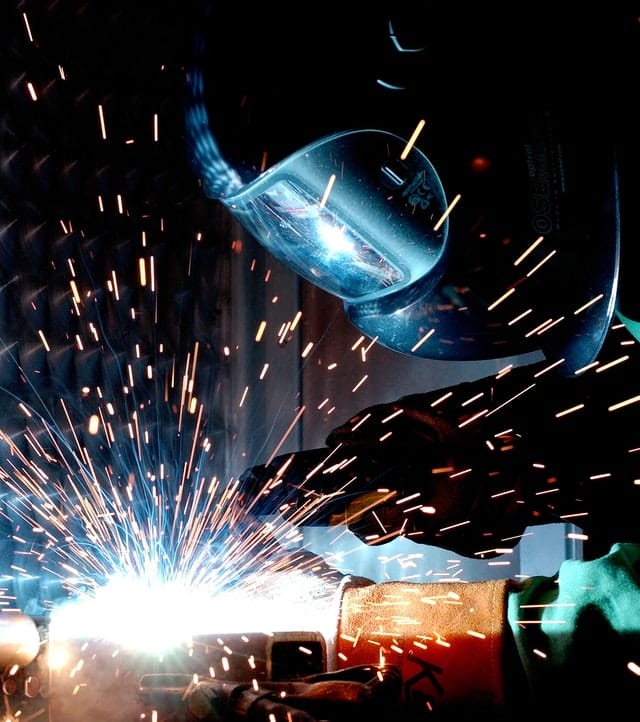The world of commerce provides many benefits to society. Businesses provide many consumer goods to the average person, and competition drives companies to innovate, producing ever-better products. However, a lot goes into getting those consumer goods into the hands of customers. In order to retailers to sell products, those products have to be manufactured and distributed. These relationships constitute the supply chain that is the lifeblood of any business model. The foundation of the supply chain is manufacturing, making factories the most important and fundamental force at which in commerce as you know it. Here’s what you need to know about building a manufacturing company from the ground up.
Safety Precautions
Manufacturing takes many forms, in a sense, but the term most often refers to the production of goods from raw materials in a factory. Factories have long been the backbone of commerce, but they have also been historically dangerous. However, today is a far cry from the Industrial Revolution, and many advancements in technology and human resources have made today’s factories a much safer place.
For example, an arc flash is a dangerous, if uncommon, type of electrical surge, and protecting factory workers again that danger is essential. However, factories can be dangerous even when everything works as intended, purely because of the potential for destruction that industrial equipment tends to have and good, old fashion human error. Protecting workers from themselves is a priority, and features such as safety interlock switches can help to minimize the risk of major accidents due to simple mistakes.
Federal and industry regulations help to ensure that everyone is on the same page in terms of these safety protocols. Failing to comply with safety regulations can result in hefty fines, but the regulations themselves can give you a blueprint to follow when it comes to making your place of businesses safer for your workers.
Equipment
Industrial manufacturing is, as the name implies, dependent on industrial equipment. This equipment poses many potential threats to workers if not handled correctly, however. Likewise, the equipment itself is not only initially costly, but also potentially costly in terms of maintenance. Mechanical failures are never ideal and always more costly than one might like. However, industrial equipment is much more costly and time consuming to repair in many cases.
Therefore, it’s important to reduce the need for full on repairs in favor of regular maintenance. Having your equipment inspected on a regular basis is the best way to save money on maintenance, because it can highlight potential mechanical failures before they happen, at which time they can more easily and affordably be repaired with minimal downtime that can cost you additional money. Thanks to developments in IoT technology, maintenance can be much more simple, still.
Space
Given the sizes and shapes of many pieces of industrial equipment, it’s easy to see that space very quickly becomes an issue for industrial manufacturing. Factories are typically quite large in order to house machines that are also gargantuan in stature. However, you’ll still need much more space than that required to fold your machinery, because you’ll also need to leave room for workers to move about safely. Likewise, a typical factory is one big chamber for all of the machinery, separated into levels by catwalks, rather than individual floors.
Smart Office Technology
The Internet of Things, IoT, is a branch of technology that facilitates connecting various devices to the internet. However, the true strength of this kind of tech is that it can be used to create an interconnected web of devices and programs, culminating in a smart home or a smart office. One of the many benefits of IoT design is that it encourages the addition of new functionality to age old devices. For example, IoT industrial manufacturing equipment can be augmented with self-diagnostic capabilities that can simplify the process of anticipating mechanical failures and addressing them before they actually come to pass.
On the other hand, IoT tech excels at giving users more flexibility in the form of remote control of various devices and systems, typically from a central hub such as a smartphone app or a virtual assistant. Then can further reduce the potential danger that may face factory workers, because some of the fine tuning and basic operation of factory equipment can be handled remotely at a safe distance. IoT still has more to offer, however.
Where a factory runs on the principle of automating manufacturing for mass production, IoT also excels at automation, typically using artificial intelligence. What this means for factory workers is that smart tech can be used to initiate and stop processes as needed without the requirement of human oversight. While oversight is ultimately necessary to ensure that things go smoothly and no one is injured, the risk of mistakes and injuries is dramatically lower when using AI to observe more fully and act more quickly than a human foreman can.


